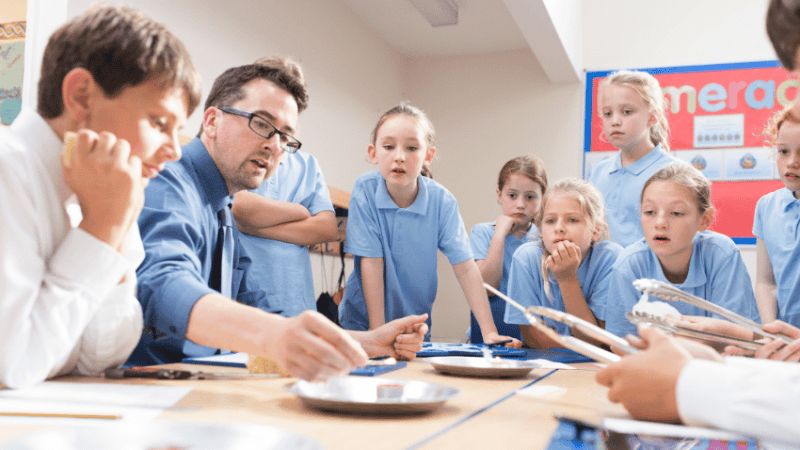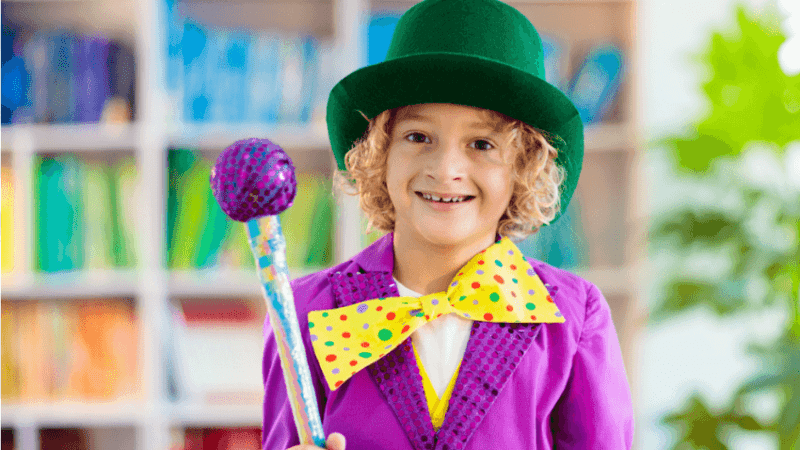Climate change for kids – How a zoo school trip boosts pupils’ environmental education

It’s never been more important to instil environmental awareness in children, and your local zoo is the perfect place to connect them to the issues affecting the world, says Holly Bestley…
As the severity of the climate crisis and the challenges facing the environment continue to mount, and sustainability climbs the global agenda, covering climate change for kids from an early age has never been more important.
As the generation likely to be living with the long-term consequences of urgent issues such as global warming and biodiversity loss, starting the conversation about how they can help is essential.
This will normalise lifelong environmental consideration and will also combat misconceptions before they are fully formed.
Highlighting how individual actions can have global impact, as well as using narratives that pupils may have encountered in the media, will give context to a variety of topics across the curriculum and relate world issues to their own personal experiences.
Encouraging interests in later life
The myriad opportunities to link these issues to their own lives and choices will also help build pupils’ science capital – the best way to encourage an interest in science later in life. You never know – you may have future climate scientists in your class.
This will encourage an ongoing interest and understanding of environmental issues thereby equipping them to make conscientious choices.
Taking it further, environmental change or citizen science campaigns in school or the local area are a great way to help pupils feel a sense of ownership and achievement over a project and the impact they can have, motivating them to continue these actions into the future.
You never know, one of your pupils might be so inspired they go on to be the next leading conservationist of their generation!
Beyond the classroom
School trips ideas such as a visit to a zoo or safari park are a brilliant way to bring learning about the environment to life. Coming nose to nose with the very species already at threat from these issues will create a lasting emotive impact.
By helping to shift the lens from the impact on the individual to the impact on the planet and its inhabitants (human or animal), it can encourage ideas of global citizenship.
As the dramatic decline in the world’s wildlife continues, modern zoos aim to safeguard the remaining individuals, to educate people about the threats they face and to fund and enact conservation efforts.
They are the perfect places to explore the real-life consequences of environmental challenges, as well as what’s being done to try and combat them.
Zoos and safari parks present countless opportunities to draw learning from many different subjects, from science and maths to art and English, allowing you to explore environmental issues in a truly cross-curricular way.
So here are our top tips for planning a visit.
Introduce the key theory in the classroom
Structure your trip around the focus topic. Introducing key aspects in the classroom before you venture to the zoo so that learning opportunities are maximised. You could also make the most of the workshops that many zoo education teams offer on these topics to consolidate learning on the day.
If you can’t find information on the relevant topic on their webpage, get in touch! Many teams are happy to adapt their sessions to your needs.
Set challenges whilst on site
Structure your day around exploring your topic using the information available on-site.
Signage will nearly always display the status of different species in the wild, what threat they’re facing and what’s being done to combat this.
And these sites are also full of staff who will be more than happy to answer questions if the information is not immediately visible – their expert knowledge is free, so make use of it.
Activity ideas
Effects of climate change
Label the adaptations of animals from cold or arctic habitats and discuss how they would be impacted if this habitat changes due to the effects of climate change.
Pollution
Choose animals from around the site that live in the same habitat and arrange them in a food chain.
Discuss how pollutants, from plastic to chemicals, might pass up this chain if consumed by the lowest organisms.
Look at waste in the pupils’ pack lunches on the day and discuss how that might impact local wildlife if it wasn’t disposed of properly.
Sustainability and living green
Ask pupils to log what sustainable activities they notice taking place around the site.
From recycling bins to a ban on single-use plastic, most zoos and safari parks are striving to reduce their own impact on the planet.
For example, here at ZSL Whipsnade Zoo all our herbivore poo and other compostable waste is compacted down and made into fertiliser for the grounds. Encourage them to ask staff for examples!
Habitat loss
Identify different habitats present in the animal enclosures (from rainforests to savanna) and list reasons why these habitats might be being lost.
This could include greenhouse gas emissions and the impacts of climate change, such as extreme weather events.
Label how different animals are adapted to live in specific habitats and discuss why they can’t change habitats if theirs disappears.
Extreme weather and other threats
Create a log of which animals are impacted by each threat and determine which threat is most widespread amongst these species. Use results to illustrate that most species are facing more than one of these issues.
Older pupils could link these species with the species’ geographical location to see where in the world these issues are having the largest impact.
Back in the classroom
Extend cross-curricular learning from your trip back in the classroom. Task students to research what conservation projects exist to help the animals they encountered and to present their findings to the class.
In English, pupils could use what they learnt to write a persuasive letter requesting actions from your local MP.
In art, create a campaign poster persuading people in your neighbourhood to take action.
Or join these all together – see what actions could be taken at school on your issue and get the class to plan and carry out a campaign to get the rest of the school on board.
They’ll be amazed by the impact simple changes can have if enacted by many people!
How to use zoos to cover climate change for kids
- Bring pupils nose to nose with the animals impacted by environmental issues to create a lasting emotive impact.
- Explore the topic in class first to focus your trip – or make the most of the zoo’s education workshops.
- Set pupils challenges during your visit encouraging them to read the signage and discover answers for themselves.
- Ask staff around site – their expert knowledge is free!
- Take your learning back to school and explore it in different ways to launch an environmental campaign.
Holly Bestley is senior learning officer at ZSL Whipsnade Zoo, the UK’s largest zoo, home to hundreds of animal species for your pupils to discover. Visit zsl.org/education to start planning your next school trip.










